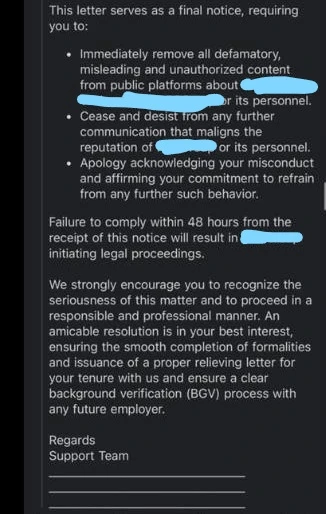
i
Amazon
Proud winner of ABECA 2025 - AmbitionBox Employee Choice Awards
Filter interviews by
Amazon Software Development Engineer Interview Questions and Answers
56 Interview questions
Detecting cycles in a directed acyclic graph (DAG) using dynamic programming techniques.
A directed acyclic graph (DAG) has no cycles by definition.
To check for cycles, perform a topological sort.
If a topological sort is possible, the graph is acyclic.
Example: In a graph with edges (1->2, 2->3), topological sort yields [1, 2, 3].
If you encounter a node that is already in the current path, a cycle exists.
Designing a low-level architecture for Uber's ride-sharing platform focusing on key components and interactions.
User Management: Handles user profiles, authentication, and authorization.
Ride Management: Manages ride requests, cancellations, and ride history.
Driver Management: Tracks driver profiles, availability, and ratings.
Geolocation Service: Provides real-time location tracking for users and drivers.
Pricing En...
Inorder traversal visits nodes in a binary tree in left-root-right order, useful for sorted output.
Inorder traversal is a depth-first traversal method.
It visits the left subtree, then the root node, and finally the right subtree.
Example: For a tree with root 1, left child 2, and right child 3, the inorder traversal is [2, 1, 3].
It can be implemented recursively or iteratively using a stack.
Inorder traversal of a b...
I improved a product feature decision by analyzing user engagement metrics, leading to a more effective design.
Identified a drop in user engagement metrics for a specific feature.
Conducted A/B testing to compare user interactions with different designs.
Analyzed data showing a 30% increase in engagement with the new design.
Presented findings to the team, leading to a decision to implement the changes.
What people are saying about Amazon






Design a system for booking tickets for events like movies, concerts, etc.
Use microservices architecture for scalability and flexibility
Implement a user-friendly interface for easy ticket booking
Include features like seat selection, payment gateway integration, and booking history
Utilize a database to store event details, user information, and booking records
BookMyShow is a platform for booking movie tickets, events, and shows, integrating various components for seamless user experience.
User Interface: Intuitive design for easy navigation, showcasing movies, shows, and events.
Search and Filter: Allows users to search for movies by genre, language, or location.
Booking System: Handles ticket selection, seat selection, and payment processing.
Notifications: Sends reminder...
Bitly's design involves components for URL shortening, tracking, and analytics to optimize link management.
URL Shortening: Converts long URLs into short, manageable links (e.g., bit.ly/abc123).
Redirection Service: Handles HTTP requests to redirect users from short links to original URLs.
Analytics Dashboard: Provides insights on link performance, such as click rates and geographic data.
API Integration: Allows devel...
I have solved various coding questions, focusing on algorithms, data structures, and problem-solving techniques.
Implemented sorting algorithms like QuickSort and MergeSort to understand time complexity.
Solved problems on LeetCode, such as 'Two Sum' and 'Longest Substring Without Repeating Characters'.
Worked on dynamic programming challenges, including the 'Knapsack Problem' and 'Fibonacci Sequence'.
Developed solut...
Design a hotel management system to handle bookings, check-ins, and customer services efficiently.
User authentication: Allow users to create accounts and log in to manage bookings.
Room management: Track room availability, types, and pricing (e.g., single, double, suite).
Booking system: Implement a calendar for checking availability and making reservations.
Payment processing: Integrate secure payment gateways for o...
LRU caching algorithm stores most recently used items, discarding least recently used items when full.
Use a doubly linked list to maintain order of items based on recent usage
Use a hashmap to quickly access items in the cache
When an item is accessed, move it to the front of the linked list
When cache is full, remove the last item in the linked list
Amazon Software Development Engineer Interview Experiences
37 interviews found
Software Development Engineer Interview Questions & Answers
posted on 8 Mar 2025
I appeared for an interview in Feb 2025.
(2 Questions)
- Q1. Self introduction
- Q2. Your qualification
About our role tell about the why u choose this role
(2 Questions)
- Q1. Self introduction
- Q2. Why u choose this company
- Ans.
I chose this company for its innovative culture, commitment to growth, and alignment with my career goals in software development.
The company's focus on cutting-edge technology aligns with my passion for innovation, as seen in projects like [specific project].
I admire the company's commitment to professional development, offering programs that help employees enhance their skills.
The collaborative work environment here ...
Software Development Engineer Interview Questions & Answers
posted on 5 Apr 2025
I appeared for an interview in Mar 2025, where I was asked the following questions.
- Q1. Explain a time where you have improved a decision based on metrics?
- Ans.
I improved a product feature decision by analyzing user engagement metrics, leading to a more effective design.
Identified a drop in user engagement metrics for a specific feature.
Conducted A/B testing to compare user interactions with different designs.
Analyzed data showing a 30% increase in engagement with the new design.
Presented findings to the team, leading to a decision to implement the changes.
- Q2. Coding on Inorder traversal concept
- Ans.
Inorder traversal visits nodes in a binary tree in left-root-right order, useful for sorted output.
Inorder traversal is a depth-first traversal method.
It visits the left subtree, then the root node, and finally the right subtree.
Example: For a tree with root 1, left child 2, and right child 3, the inorder traversal is [2, 1, 3].
It can be implemented recursively or iteratively using a stack.
Inorder traversal of a binary...
I appeared for an interview in Mar 2025, where I was asked the following questions.
- Q1. Design uber LLD
- Ans.
Designing a low-level architecture for Uber's ride-sharing platform focusing on key components and interactions.
User Management: Handles user profiles, authentication, and authorization.
Ride Management: Manages ride requests, cancellations, and ride history.
Driver Management: Tracks driver profiles, availability, and ratings.
Geolocation Service: Provides real-time location tracking for users and drivers.
Pricing Engine:...
- Q2. 1d DP Graph -> cycle in acyclic graph
- Ans.
Detecting cycles in a directed acyclic graph (DAG) using dynamic programming techniques.
A directed acyclic graph (DAG) has no cycles by definition.
To check for cycles, perform a topological sort.
If a topological sort is possible, the graph is acyclic.
Example: In a graph with edges (1->2, 2->3), topological sort yields [1, 2, 3].
If you encounter a node that is already in the current path, a cycle exists.
(2 Questions)
- Q1. Leetcode medium
- Q2. LLD round not very difficult
Ds and Algo, tree, array String
DS Algo, Tree Array grapH String
(1 Question)
- Q1. Behavioural questions
(2 Questions)
- Q1. 1 on DS Algo LC medium
- Q2. Behavioural questions
1hr with two DSA questions, one is printing nth row of pascal triangle,
other I donot remember
(2 Questions)
- Q1. Diagonal traversal of a binary tree
- Ans.
Diagonal traversal of a binary tree involves printing the nodes of the tree in a diagonal pattern.
Start with the root node and move to its right child, then move down to its left child.
Repeat this process for each diagonal of the tree, printing the nodes as you traverse.
Use a queue to keep track of the nodes at each level of the tree.
- Q2. I donot remember
(2 Questions)
- Q1. Merge point of two inked lists which will be same from a node. (Linked List)
- Ans.
Find the merge point of two linked lists.
Traverse both linked lists to find their lengths.
Calculate the difference in lengths and move the pointer of the longer list by the difference.
Traverse both lists in parallel until the merge point is found.
- Q2. Next greater element (Stack)
- Ans.
The Next Greater Element problem involves finding the next greater element for each element in an array.
Use a stack to keep track of elements for which the next greater element is yet to be found.
Iterate through the array and for each element, pop elements from the stack until a greater element is found.
Store the next greater element for each element in a result array.
(1 Question)
- Q1. Solve soduko puzzle(I have used backtracking)
Skills evaluated in this interview
DSA and SQL leetcode questions
(1 Question)
- Q1. Explain the coding questions that you have solved
- Ans.
I have solved various coding questions, focusing on algorithms, data structures, and problem-solving techniques.
Implemented sorting algorithms like QuickSort and MergeSort to understand time complexity.
Solved problems on LeetCode, such as 'Two Sum' and 'Longest Substring Without Repeating Characters'.
Worked on dynamic programming challenges, including the 'Knapsack Problem' and 'Fibonacci Sequence'.
Developed solutions ...
Standard DS/Algo involving mostly trees and leadership principles
(2 Questions)
- Q1. System Design Hotel
- Ans.
Design a hotel management system to handle bookings, check-ins, and customer services efficiently.
User authentication: Allow users to create accounts and log in to manage bookings.
Room management: Track room availability, types, and pricing (e.g., single, double, suite).
Booking system: Implement a calendar for checking availability and making reservations.
Payment processing: Integrate secure payment gateways for online...
- Q2. Behavrioal questions
I applied via Approached by Company and was interviewed in May 2024. There were 2 interview rounds.
Hackerrank 2 questions followed by leadership principle questions
(2 Questions)
- Q1. Leadership principle questions with account managers
- Q2. Leetcode questions with SDE
(1 Question)
- Q1. Tell me about a time when you had conflict with your seniors at work and how you handled it
- Ans.
Handled conflict with seniors by discussing concerns openly and finding common ground
Approached senior calmly and respectfully to discuss concerns
Listened to their perspective and tried to understand their point of view
Suggested potential solutions or compromises to resolve the conflict
Worked together to find common ground and move forward professionally
Amazon Interview FAQs
Some of the top questions asked at the Amazon Software Development Engineer interview -
The duration of Amazon Software Development Engineer interview process can vary, but typically it takes about 2-4 weeks to complete.
Tell us how to improve this page.
Amazon Interviews By Designations
- Amazon Software Developer Interview Questions
- Amazon Customer Service Associate Interview Questions
- Amazon Customer Service Executive Interview Questions
- Amazon Transaction Risk Investigator Interview Questions
- Amazon Software Developer Intern Interview Questions
- Amazon Associate Interview Questions
- Amazon Seller Support Associate Interview Questions
- Amazon Software Engineer Interview Questions
- Show more
Interview Questions for Popular Designations
- Software Developer Interview Questions
- Software Engineer Interview Questions
- Senior Software Engineer Interview Questions
- Senior Engineer Interview Questions
- System Engineer Interview Questions
- Associate Software Engineer Interview Questions
- Project Engineer Interview Questions
- Lead Software Engineer Interview Questions
- Show more
Overall Interview Experience Rating
based on 34 interview experiences
Difficulty level
Duration
Top Skills for Amazon Software Development Engineer
Interview Questions from Similar Companies
Amazon Software Development Engineer Reviews and Ratings
based on 139 reviews
Rating in categories
|
Customer Service Associate
4.1k
salaries
| ₹0.6 L/yr - ₹7.8 L/yr |
|
Transaction Risk Investigator
3.1k
salaries
| ₹2 L/yr - ₹6.3 L/yr |
|
Associate
3k
salaries
| ₹0.8 L/yr - ₹7 L/yr |
|
Senior Associate
2.6k
salaries
| ₹1.8 L/yr - ₹9 L/yr |
|
Software Developer
2.3k
salaries
| ₹24.8 L/yr - ₹44 L/yr |

Flipkart

TCS


Netflix
- Home >
- Interviews >
- Amazon Interview Questions


















